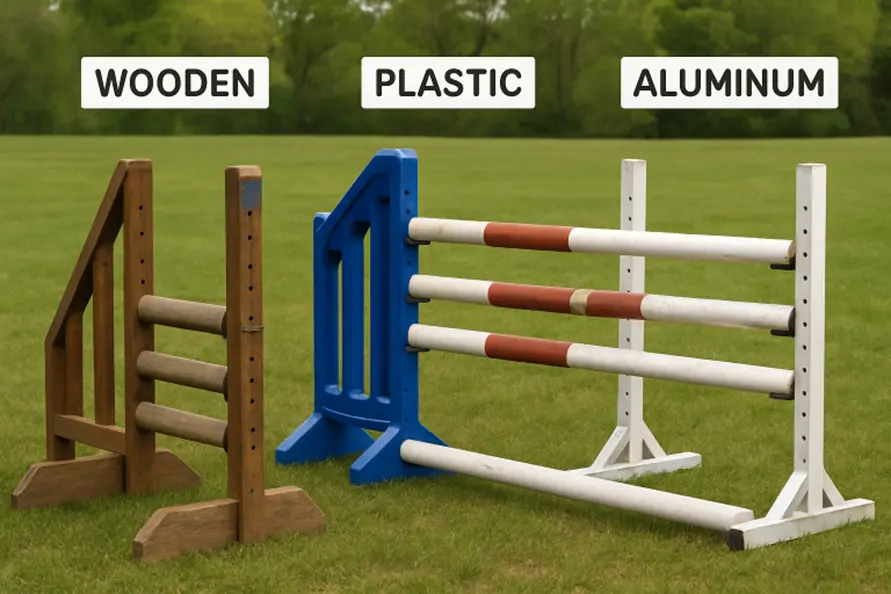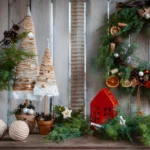Enhancing your equestrian facilities with jumps can be an expensive endeavor, making used equipment an appealing option. However, prioritizing safety and quality is crucial to ensure that your investment pays dividends for both horse and rider. For those exploring used horse jumps, this guide details strategies to find equipment that upholds the highest standards for safety and value. Not all pre-owned jumps are created equal—while some may retain their integrity, others could present hidden risks. That’s why a discerning approach, grounded in understanding materials, construction, and maintenance history, is essential for making confident purchases. This resource will equip you with the actionable insights needed to avoid common pitfalls and maximize the performance and safety of your course.
Understanding Materials
The material construction of horse jumps directly influences their safety, durability, and required maintenance. Used jumps are most commonly made from wood, PVC (plastic), or aluminum:
- Wood: Prized for its traditional look and sturdy feel, but susceptible to rot, splinters, and warping, especially if left outdoors without protection.
- PVC (Plastic): Lightweight and easy to move, plastic jumps are immune to rust and rot, but may become brittle in freezing conditions and lack the sturdiness of alternative materials.
- Aluminum: Increasingly popular for its lightweight and corrosion-resistant qualities, aluminum is generally a low-maintenance material that delivers strong performance.
Consider your local climate and storage capacity when evaluating materials. Wooden jumps demand more care and protective treatments, whereas aluminum or PVC options are generally lower maintenance but provide different levels of durability and safety.
Conducting Thorough Inspections
Inspecting used horse jumps is crucial for identifying potential weaknesses before making a purchase. Thorough checks should focus on:
- Jump Standards: Examine all weight-bearing surfaces and corners for cracks, soft spots, or instability. Rock the standards to check for wobbling or hidden movement.
- Poles: Inspect for splinters, warping, surface cracks, or frayed ends that may signal deeper structural flaws.
- Hardware: Ensure all nuts, bolts, and fasteners are present, rust-free, and free from deformation.
The integrity of these key components directly affects the safe use of the system. Even minor damage at stress points can significantly compromise performance during training or competition. When in doubt, requesting additional photos or videos—or arranging an in-person inspection—can prevent costly mistakes.
Evaluating Design and Construction
Not all jumps are created equal. The underlying design has a significant impact on both ease of use and the potential for accidents. Focus on:
- Adjustability: Look for jumps with multiple height options or interchangeable parts to accommodate riders of varying levels.
- Base Stability: Wide, weighted bases reduce the risk of tipping and ensure greater safety on uneven terrain.
- Weight Distribution: Balanced jumps withstand impact and resist unwanted shifting, while still allowing poles to fall easily if struck.
Investing in thoughtfully designed used jumps increases both versatility and user-friendliness while reducing hazards during training.
Prioritizing Safety Features
Advanced safety features are now standard on quality jumps. Prioritize equipment that includes:
- Breakaway Cups: These holders release poles safely if struck, reducing the likelihood of injury compared to fixed cups or sharp brackets.
- Rounded Edges: Smooth edges and corners minimize cuts or bruises if the horse or rider makes contact.
- Non-Slip Bases: Essential for outdoor jumps, non-slip surfaces prevent unwanted shifting—especially in wet or muddy conditions.
Incorporating modern safety advances ensures your equipment provides a safe environment for every ride, regardless of skill level.
Assessing Maintenance History
A jump’s history reveals a lot about its present-day value. Ask sellers about the frequency of inspections, storage practices (indoors versus outdoors), and any past repairs or accidents involving the equipment. Properly maintained jumps are less likely to harbor hidden damage that could compromise safety or shorten usable lifespan.
Considering Seller Reputation
Selecting jumps from reputable sellers significantly boosts your odds of finding safe, high-quality equipment. Conduct due diligence:
- Check online ratings, testimonials, and reviews through respected horse forums or social platforms.
- If possible, ask to speak directly with previous buyers to hear about their experiences.
- Evaluate the seller’s knowledge and transparency—reputable dealers are forthcoming with details about their inventory.
Transparent communication and positive community feedback are strong indicators of a trustworthy seller.
Transportation and Setup
Safe transportation and installation are crucial to preserving the integrity of your investment. Secure jumps with proper straps or padding during transit and ensure you have enough help to prevent dropping or damaging parts. Upon arrival, follow the manufacturer’s or seller’s guidelines for setup—stability and even placement are non-negotiable for safe use. For complex jump assemblies, consider professional help for installation to guarantee that all components are secure and properly balanced.
Budgeting for Future Maintenance
Long-term value is secured by proactive care. Whether you purchase wooden, plastic, or aluminum jumps, allocate funds for:
- Regular inspections for wear or weather damage
- Treatments such as wood preservatives or rust inhibitors
- Replacing worn or broken parts (especially hardware and moving elements)
Routine maintenance ensures that even the most heavily used jumps continue to perform safely and reliably for years to come.
By following these comprehensive guidelines, you can confidently choose used horse jumps that offer a balance between affordability, durability, and—most importantly—safety for all riders and horses.
Also Read–Customer Segmentation Models That Drive Retention in Fintech



